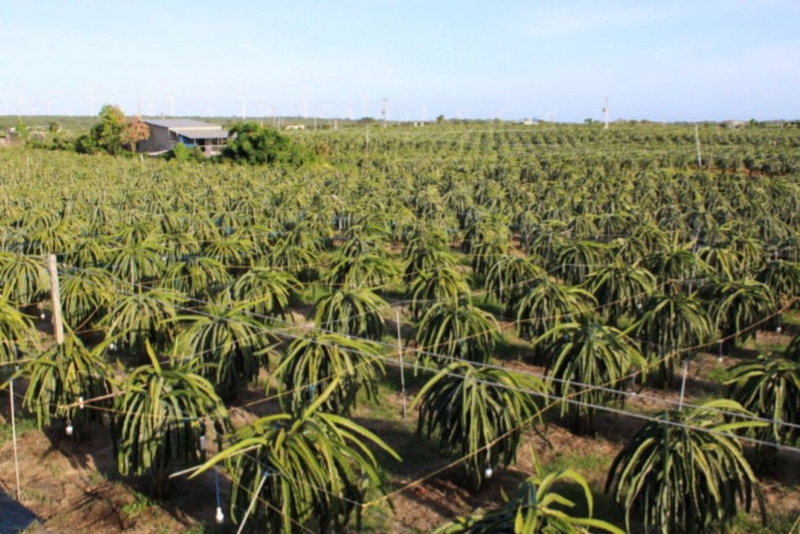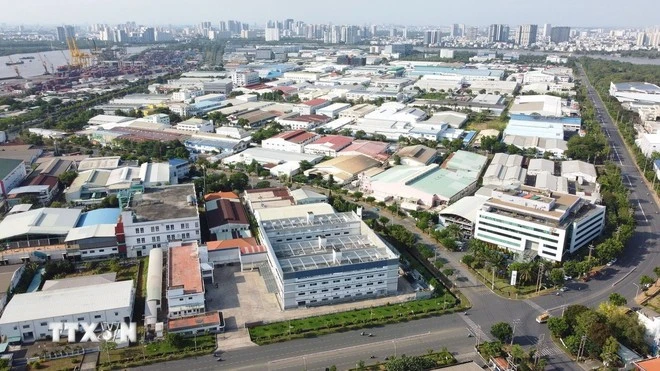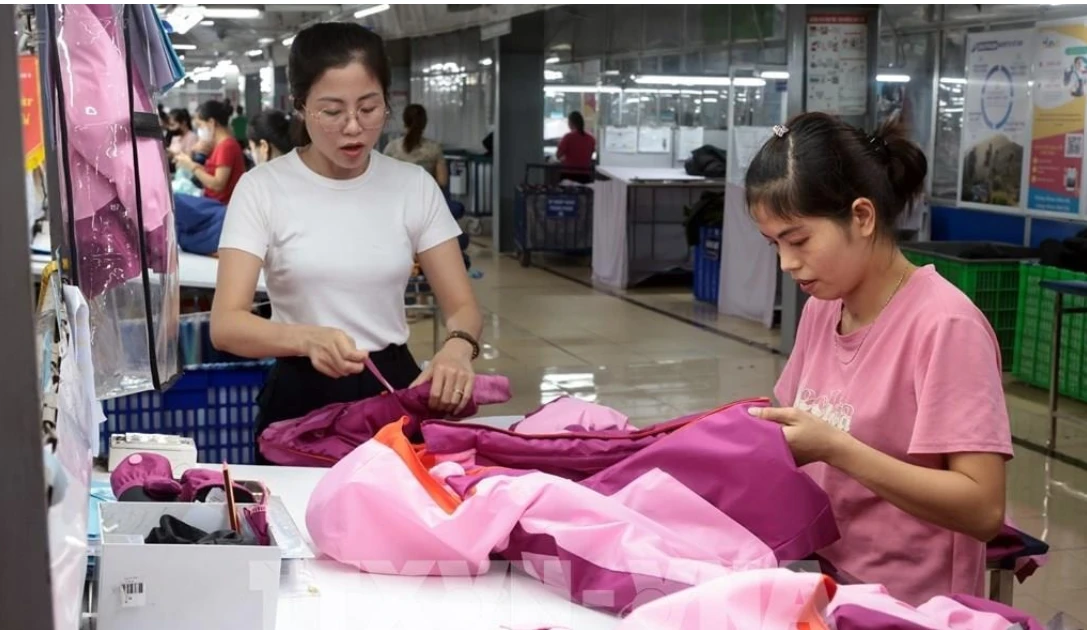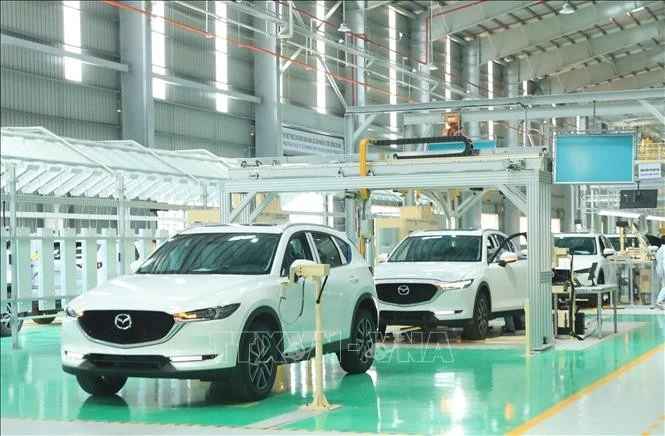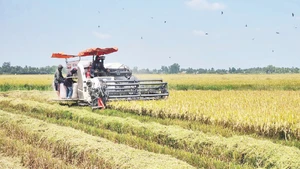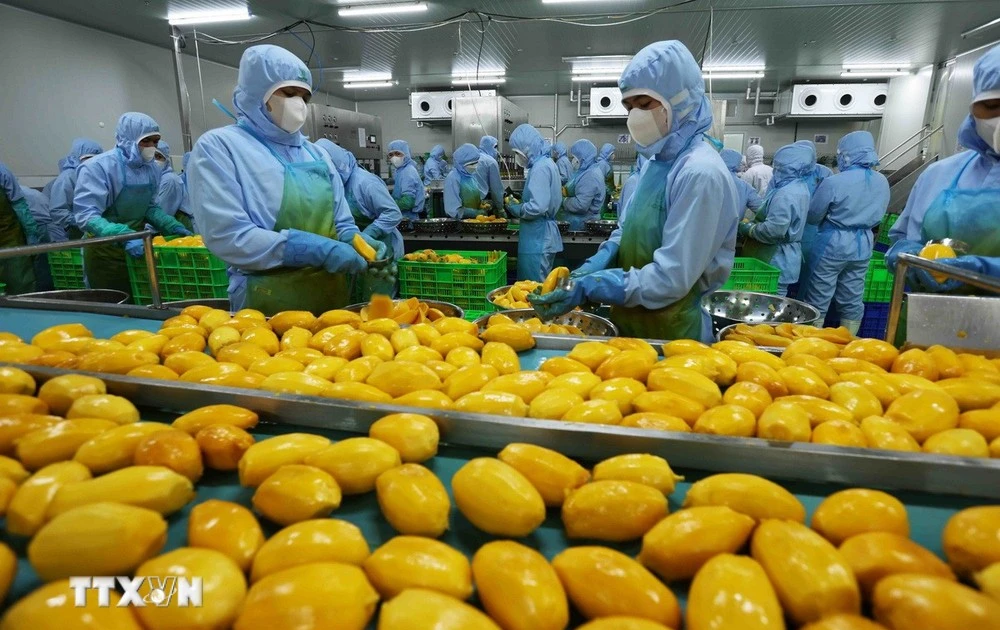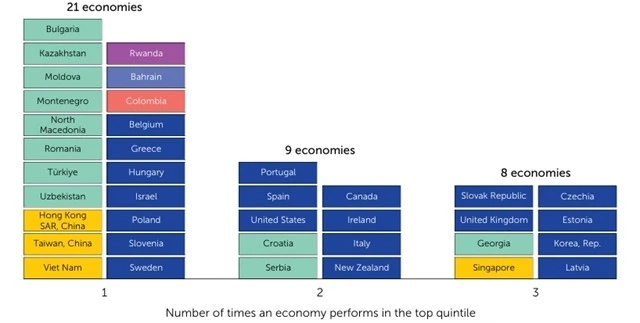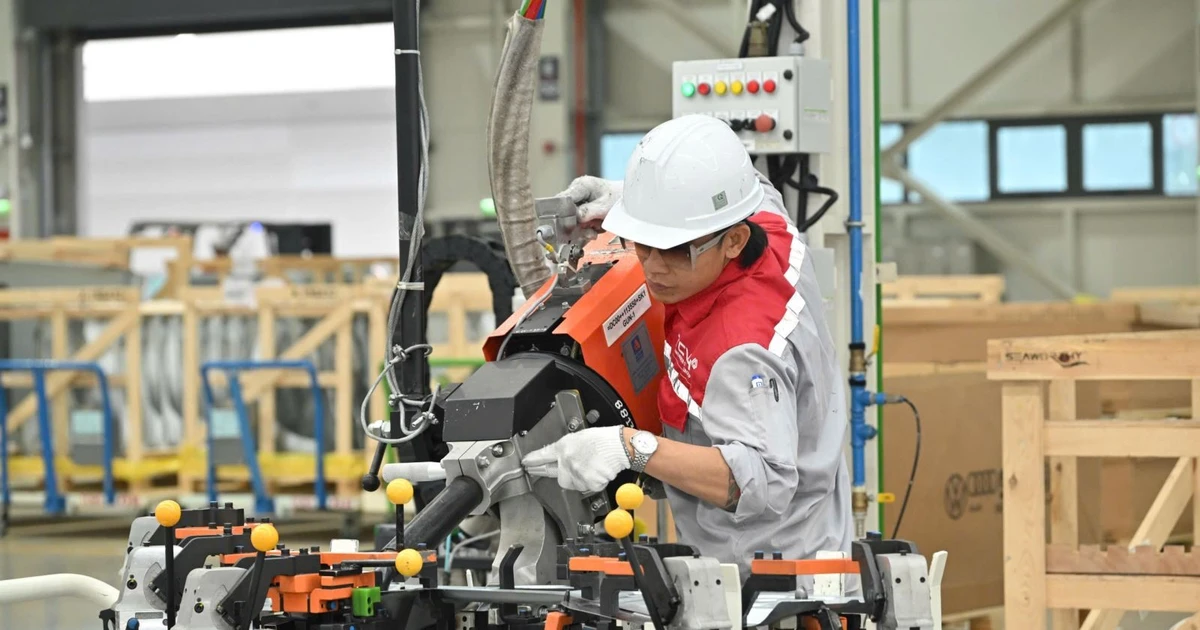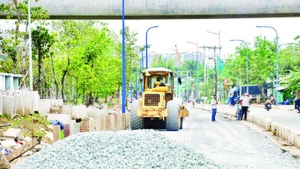However, many families were not bold enough to switch, but it was not until scientists released the experimental results of using Compact lamps to light dragon fruit trees, showing that they were more effective than incandescent lamps, that many farmers began to switch.
Reducing emissions, increasing profits
Around 2018, 9W LED bulbs were born, saving 50% more electricity than Compact bulbs. At that time, the 9W LED bulb was recognized by the Ministry of Agriculture and Rural Development (now the Ministry of Agriculture and Environment) as a technical advance in the field of cultivation in Decision No. 150/QD-TT-CCN dated August 4, 2020. It is worth noting that the LED bulb is not a conventional lighting product but was researched and manufactured by the Rang Dong Light Bulb and Vacuum Flask Joint Stock Company to serve in agricultural production.
Recently, the Farmers’ Association of Binh Thuan province coordinated with the Rang Dong Light Bulb and Vacuum Flask Joint Stock Company to implement a pilot model of a specialized 5W LED lamps to stimulate dragon fruit trees to flower. The Association has deployed 20 models in the off-season (off-season, dragon fruit trees mainly bear fruit thanks to lighting) with the results that 5W LED lights (red light) installed in a 2m/bulb pattern, with a density of 1,785 bulbs/ha, have the ability to stimulate dragon fruit flowering similar to 9W LED lights (yellow light) installed in a 1.5m/bulb pattern, with a density of 2,380 bulbs/ha.
Thereby, 5W LED lights (red light) save 48% in terms of electricity, compared to 9W LED lights, reducing total production costs by 10.25% . While harvesting dragon fruit, Mr. Tran Dinh Trung, Director of Thuan Tien Dragon Fruit Cooperative (Ham Thuan Bac district, Binh Thuan province) happily told us: After using a 5W LED bulb system instead of 9W LED lighting, the power consumption for each hectare of dragon fruit has decreased significantly, the yield and the quality of the fruit has increased, with profit also having tincreased by 200-300 VND/kg. Currently, the Thuan Tien Dragon Fruit Cooperative has 10 members with 20 hectares of dragon fruit, with an average harvest of 15 tons per hectare.
Continuing research on energy-saving lamps
Deputy Director of the Rang Dong Light Bulb and Thermos Flask Joint Stock Company, Dong Nai branch (in charge of Binh Thuan province), said that saving electricity means reducing emissions from power plants, contributing to responding to climate change. The company is also implementing a “green production” strategy with the goal of reducing carbon emissions by 30% by 2030 and moving towards zero net emissions by 2050. LED lights have a long lifespan, reducing the number of bulbs that need to be produced, transported and disposed of, thereby reducing electrical waste pollution.
Currently, the company is continuing to research specialized lighting, instead of lighting dragon fruit for 8 hours, it would only be lit up for 5 hours with higher efficiency, integrating smart lighting technologies. In addition, the lights would not emit ultraviolet rays (UV), harm beneficial insects, the garden ecosystem and humans. The company will expand its cooperation models with localities and organizations to replicate this effective lighting solution nationwide.
“In the future, Rang Dong LED lights will become an indispensable part of Viet Nam’s high-tech agriculture, contributing to improving the productivity, quality and value of agricultural products, while moving towards green and sustainable agriculture,” said Dang Ngoc Anh.
According to statistics from the Binh Thuan Province Electricity Company, up to now, 100% of the dragon fruit areas in the province have applied off-season flowering treatment and used energy-saving light bulbs. Through calculations, using 20W compact lamps and 9W LED lights for the entire dragon fruit area in the province, instead of using 60W incandescent lamps as before, will save about 837 million kWh of electricity each year, equivalent to 1,354 billion VND/year, and its is estimated that investment costs will fall by more than 1,000 billion VND. In addition to lighting dragon fruit trees, LED lights are also used in the field of offshore fishing, LED lights helps attract fish, squid, etc, helping to increase fishing output, while saving on fuel for generators on ships.
Deputy Director of the Department of Agriculture and Environment of Binh Thuan province Phan Van Tan said: In recent times, scientists have collaborated with many farmers to conduct scientific and technical research on dragon fruit trees. LED lights for dragon fruit have wavelengths similar to natural light, helping stimulate strong plant growth and development, while providing productivity and quality, meeting the requirements of modern and sustainable agricultural. In addition, the use of LED lights for dragon fruit has contributed to reducing emissions from electricity use, protecting the environment, while increasing value and saving on national energy resources.
In the coming time, the Department of Agriculture and Environment of Binh Thuan province will continue to coordinate with units to strengthen information and propaganda on the role and benefits of applying digital technology in the management, production and consumption of agricultural products. From there, businesses, cooperatives and especially farmers will understand better the role and importance of applying digital technology in production; contributing to orienting the development of high-tech agriculture in a smart direction, focusing on traceability and increasing the proportion of agriculture in the economy.
